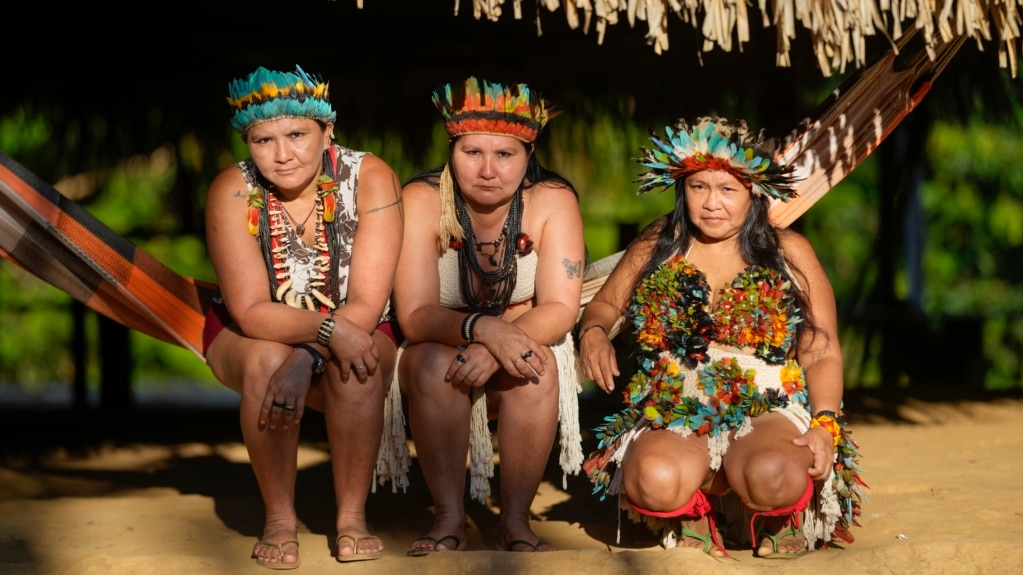The Juma are native people of the Amazon rain forest area in Brazil. In the 1990s, there were only four people remaining in the tribe.
They were Aruká, the father, and his three daughters – Boreá, Mandeí and Maytá.
In 2021, Aruká died from COVID-19. The news appeared around the world. The New York Times newspaper wrote the “last man of his tribe” was gone and many people believed the tribe would go extinct.
The tribe, in the past, was built upon the idea that men had to be in charge. Once the last man died, the tribe would no longer exist.
But the daughters had a different idea. Before Aruká died, he and his daughters started thinking about a way to keep the tribe alive by choosing a female leader.
Mandeí said her sisters and father wanted her to take the position. So, Mandeí became the first woman chief in the area.
Earlier in their lives, the Juma sisters married men from other tribes to make sure their family line could continue.
Over many years, the number of Juma people has grown. In the area that is now Juma territory, there is a lot of activity. Children play in the river. People catch fish. Women work to make flour from the cassava root. Others hunt in the forest.
They also gather at a community building called a maloca, to eat, take care of animals, rest, and use their phones. The building has mobile phone signal equipment.
Aruká, the last Juma male leader, is buried under the maloca.
Mandeí recently retired as leader. Her older sister, Boreá, is chief now.
Mandeí said she found leadership difficult, at first. She said other people did not treat the Juma with respect because the tribe was so small. People also opposed her leadership because she is female, she said.
It hurt her but did not stop her. “I adapted to seek solutions for our people,” she said.
The Juma territory needs a strong leader. It is about the size of a large city, similar to Las Vegas, Nevada. Old-growth forest covers the land. A Juma leader’s main job is to protect the territory and its natural wealth from outsiders.
People come and cut down the trees. They then use the cleared land to plant grasses that are used to raise animals.
The changes are damaging to the traditional life of native people. Developers plan to build a road nearby. The Juma say that will bring more people and industry to the area. Mandeí says the environment is already changing.
“The river doesn’t fill with water as it used to ... The water shouldn’t dry up so much like this. It’s much hotter, it wasn’t like this before. Our concern is: Why is this happening? Because of deforestation,” she said.
The Juma people work to protect their land – they move around the territory by boat and even use drones to view their land from above.
Mandeí’s nephew, Puré, is one of the guards. He said he is proud to be a Juma and protect the land.
He said he broke the rules and followed his mother’s lineage. “If I don’t identify myself as Juma, who else will?”
Puré’s mother married a man from another tribe. When he was born, he was registered as a member of his father’s tribe. But at 15, he decided to add the Juma name, his mother’s name, to his name. He had to visit Brazil’s indigenous people’s office to make the change.
Two of his cousins also added Juma to their names.
There were not many Juma people to begin with. Experts on Brazil’s native people say before non-indigenous people made contact with the Juma, there were probably a few thousand. The Juma fought the invaders and suffered major losses in battle. A book by a German Christian clergyman says the last attack on the Juma came in 1964. Over 30 people were killed, including Aruká’s father.
Later, when Mandeí became the leader, she asked for help in saving the Juma language. In 2019, she invited a language expert to visit and help create a dictionary for use with mobile phones. They also created digital records of the language with stories, speeches, and songs in the Juma language.
Wesley dos Santos went to Brazil to work on the project. He is a graduate student at the University of California – Berkeley. He said the language, Kawahiva, is endangered. It is only used by 560 people. One of its variations is Juma, and there are seven others.
Mandeí said she is concerned that the language and the people who speak it will disappear one day. There are only 24 people living in the Juma village. The three sisters are still trying to decide how to pass down the Juma traditions to the people who come after them.
“The largest responsibility I share with my sisters is not to lose Juma culture as taught by our father,” Mandeí said.
I’m Dan Friedell. And I’m Jill Robbins.

